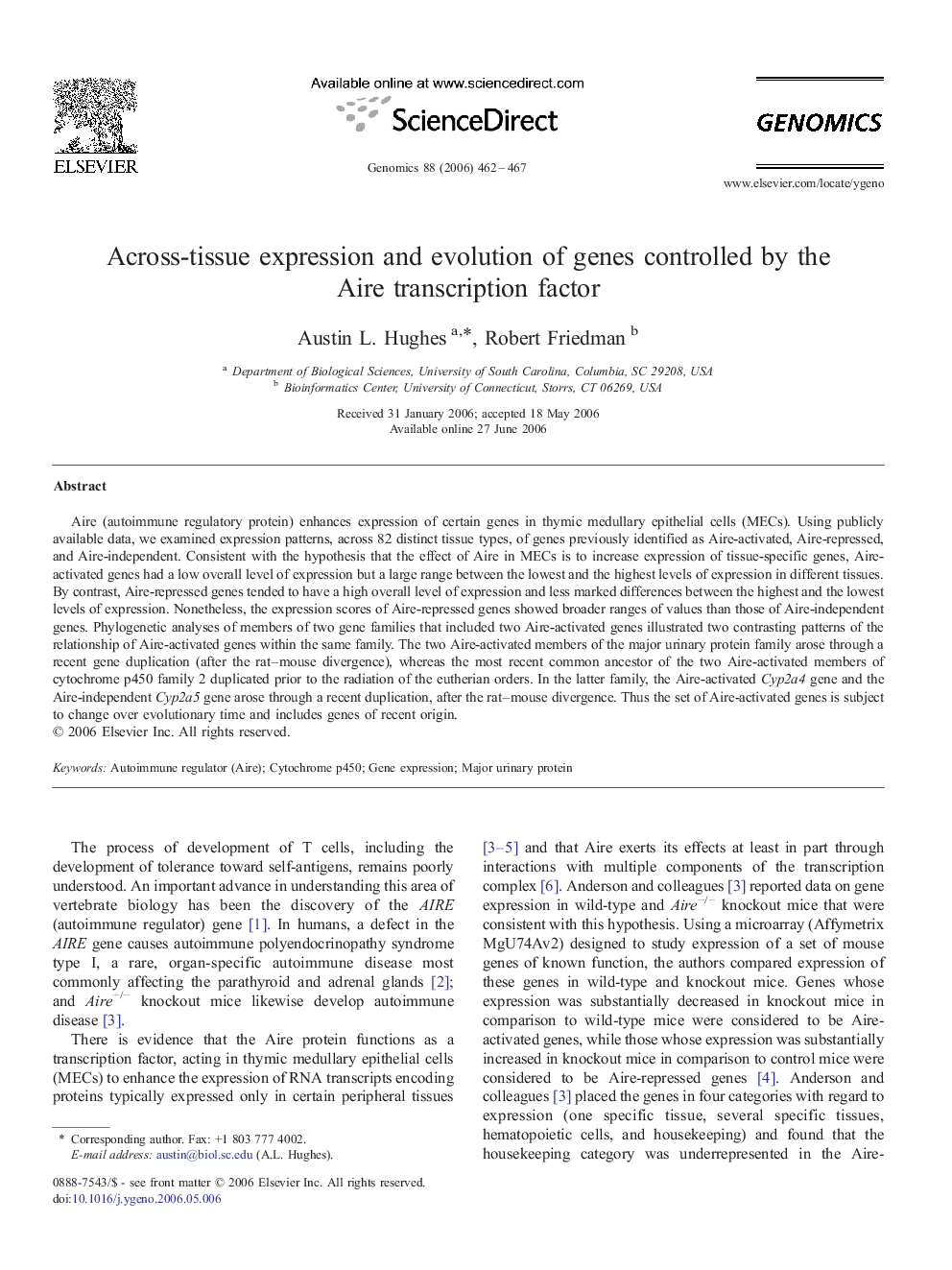| Article ID | Journal | Published Year | Pages | File Type |
|---|---|---|---|---|
| 2821267 | Genomics | 2006 | 6 Pages |
Aire (autoimmune regulatory protein) enhances expression of certain genes in thymic medullary epithelial cells (MECs). Using publicly available data, we examined expression patterns, across 82 distinct tissue types, of genes previously identified as Aire-activated, Aire-repressed, and Aire-independent. Consistent with the hypothesis that the effect of Aire in MECs is to increase expression of tissue-specific genes, Aire-activated genes had a low overall level of expression but a large range between the lowest and the highest levels of expression in different tissues. By contrast, Aire-repressed genes tended to have a high overall level of expression and less marked differences between the highest and the lowest levels of expression. Nonetheless, the expression scores of Aire-repressed genes showed broader ranges of values than those of Aire-independent genes. Phylogenetic analyses of members of two gene families that included two Aire-activated genes illustrated two contrasting patterns of the relationship of Aire-activated genes within the same family. The two Aire-activated members of the major urinary protein family arose through a recent gene duplication (after the rat–mouse divergence), whereas the most recent common ancestor of the two Aire-activated members of cytochrome p450 family 2 duplicated prior to the radiation of the eutherian orders. In the latter family, the Aire-activated Cyp2a4 gene and the Aire-independent Cyp2a5 gene arose through a recent duplication, after the rat–mouse divergence. Thus the set of Aire-activated genes is subject to change over evolutionary time and includes genes of recent origin.
